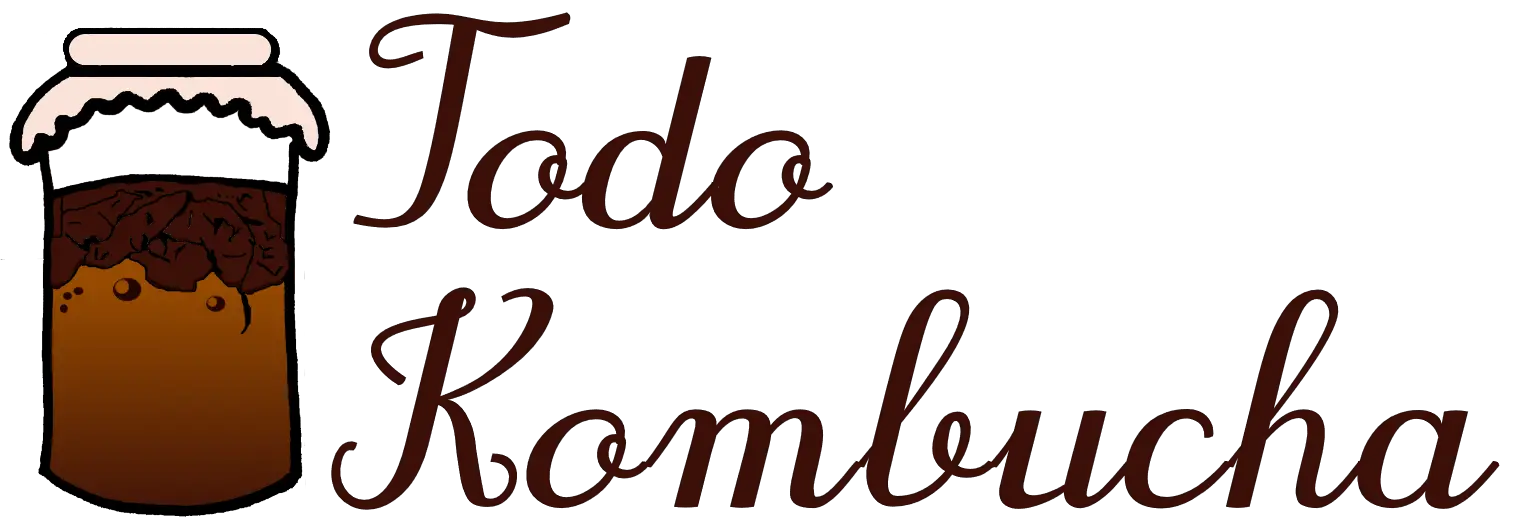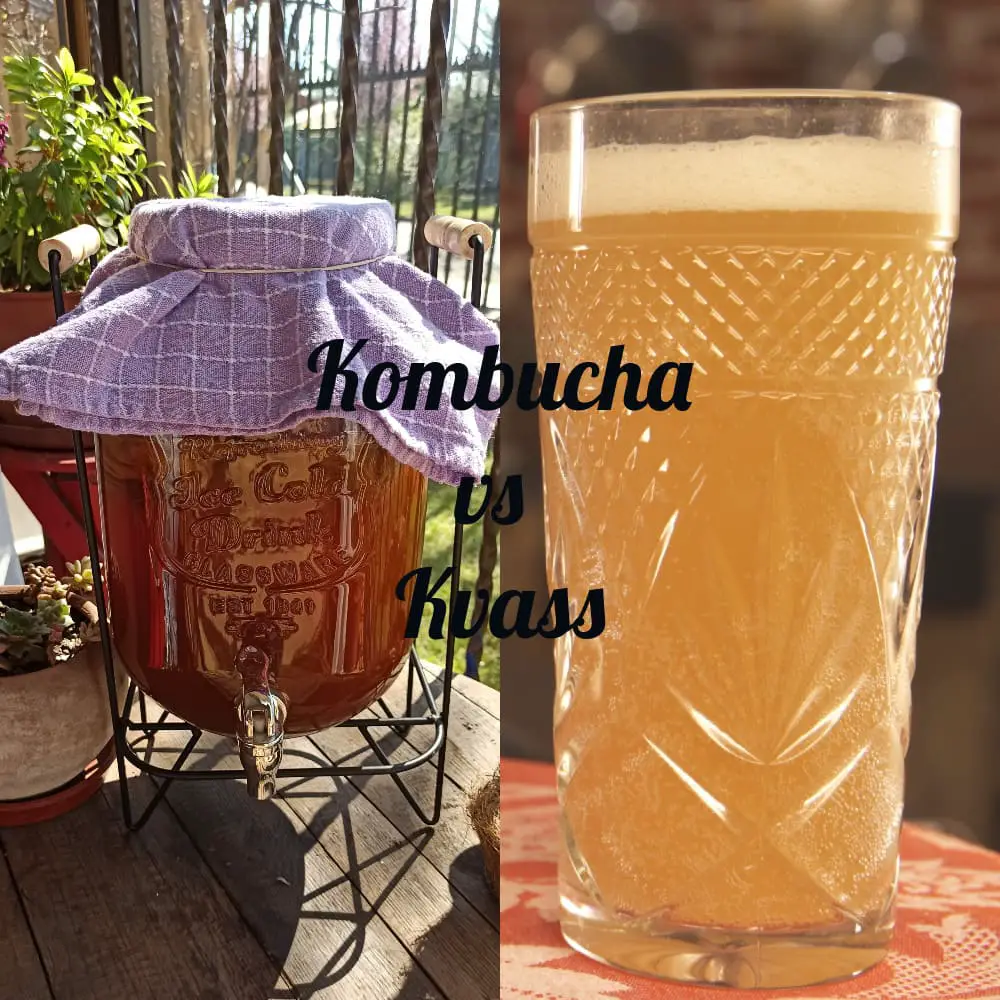Throughout history fermentation has been used as one of the essential methods for preservation, but today it has been discovered that fermented foods actually contain bacteria that can have a positive impact on the health of their consumers, which leads us today to compare kombucha vs kvass.
Kombucha and kvass are functional probiotic drinks that contain microorganisms considered beneficial to human health, among these qualities include facilitate digestion, protect against gastrointestinal diseases, or balance the immune system as a result of its strengthening.
Kombucha as a probiotic drink with little alcohol based on black or green tea, where different microorganisms coexist symbiotically for its fermentation that gives it the nutritious and essential contributions for humans.
Kvass is a fermented probiotic drink based on dried rye bread or black bread that shows approximately 1.2% alcohol however, it is also considered a non-alcoholic beverage, it contains lactic acid-producing bacteria and yeasts for fermentation.
What do kombucha and Kvass have in common?
Both are probiotic craft drinks that have functional properties in common for human health, starting with the presence of different non-pathogenic live microorganisms for fermentation.
It can be said that both drinks can be ingested by young and old people because they contain very low alcohol content without obtaining harmful effects compared to a drink with a high degree of alcohol such as wine, common beer, rum, among others.
In most parts of the world, both are considered as non-alcoholic beverages, kombucha with an ethyl alcohol content of less than 0.5% and Kvass with an ethyl alcohol content of less than 1.2%. However, in several countries the considerations between an alcoholic and non-alcoholic beverage may vary according to the laws and regulations of each country. [1]
It should be noted that because they are drinks with probiotic properties, the benefits are related to each other, resulting in the same qualities in a general and relevant way in the body, such as the balance and strengthening of the immune system. [2]
What are the benefits of kombucha and kvass?
Without wishing to go into the detail of each of them, we can say that, globally and generally, the benefits of kombucha and kvass consumption are the following: [3] [4]
- Strengthening of the immune system by the symbiosis of bacteria that help balance the bacterial flora and by the presence of vitamin C.
- Possible prevention of colon cancer by the presence of glucosinolates that fight the presence of pro-carcinogenic toxins.
- Detoxifying effects due to being diuretics.
- Facilitate the digestive process by balancing the intestinal bacterial flora.
- It provides considerable amounts of minerals, mainly calcium and vitamins.
- Protection of the intestine against infections by the presence of immunoglobulins, property of probiotics in general.
- They can be ingested by young people and older adults without causing harmful effects because they are low in alcohol.
- Ideal for people suffering from arthritis or osteoporosis, as they possibly help strengthen bones due to the presence of calcium.
- Helps prevent dermatological infections due to the presence of yeasts as in the case of Kvass.
- They are low in calories.
Contraindications of kombucha and Kvass
In both products caution should be considered with certain diseases such as acute gastritis, hypertension, liver cirrhosis, in patients with serious immunosuppression problems such as HIV, some doctors or authors also recommend the inhibition of these drinks in pregnant women, infants and children under 6 years.
In the case of kombucha, cases of toxicity have been reported as a side effect such as dizziness and nausea, lead poisoning however there have been reports of few people this may be due to people with a severe degree of immunosuppression. These are very isolated cases.
In cases of pregnant women there is no study that proves its contraindication, however, be careful when ingesting these drinks not to exceed consumption.
Recommended dosage to consume kombucha and kvass.
Kombucha being a natural drink starts with a daily intake of “120 to 360 ml” distributed before the main meals, it would be the recommended dose to notice the effects in a short term. As for DIABETICS, keep in mind not to exceed this amount for the sugar added to the drink.
You can accompany this drink with 2 liters of water per day to increase the amount of elimination of toxic substances that kombucha dissolves.
Remember that you can check our post about the recommended daily dose of kombucha or the relationship between kombucha and diabetes
The kvass although it is a low alcohol content beer there are no accurate studies as to the amount of consumption of this drink, to ingest this product can be established according to WHO regulations in which it measures alcohol consumption in UBE (Standard Drink Unit equivalent to 10 g of alcohol)
It should not exceed 4 UBE daily for men (4 beers) and 2 UBE (2 beers) daily for women at any time of the day, in order to obtain adequate consumption without harmful effects from excess intake. [5]
Are the probiotics of kombucha and kvass the same?
Both products, although they have probiotics, vary in terms of the microorganisms present for their fermentation.
In the case of kombucha, the most common microorganisms are Saccharomyces cerevisiae, Acetobacter Xylinum and Gluconobacter, among others.
In the case of Kvass the influential microorganisms are Leuconostoc Mesentericus and main yeast such as Saccharomyces cerevisiae. In addition, we have Lactobacillus Plantarum from rye bread. (3)
It is important to mention that yeasts have the function of producing ethyl alcohol and carbon dioxide from the transformation of sugar and lactic acid-producing bacteria act as a bacteriostatic agent, that is, it inhibits the development of pathogenic bacteria avoiding possible infections.
Main differences: Kombucha vs Kvass
Obviously, in the same way that they have similarities, there are fundamental differences, either by the substrates required for fermentation or by the same microorganisms that produce it, so we will see the main differences in detail below.
Origin
Kvass comes from Slavic countries such as Russia, although some others from Eastern Europe are included.
Kombucha comes from the Asian continent, exactly from China.
Raw material and its preparation
Raw material of Kvass originally part of rye bread or black bread, but you can also use fresh breads from other cereals such as wheat or rye malt. [3]
As for its preparation, the yeast of the rye, sugar and water bread dough begins as an initiator in which this rye bread is soaked in boiling water in a sterilized container and away from light, it is left to rest for approximately 8 hours for its first fermentation then it is strained and the filtered must we add the sugar and let it rest for its second fermentation, It is stored in a container in a cool place for 12 more hours and refrigerated, it can be consumed after 2 or 3 days of its preparation.
In kombucha the raw material is an infusion of sugary black or green tea.
The process of elaboration to this liquid is added a symbiotic culture of bacteria and yeasts sugar is added for its fermentation is placed in a glass container covered with a cloth that allows the circulation of air without letting dust or insects enter and the mixture is left to rest for a week or more.
Microorganisms present
As for Kvass, bacteria such as Leuconostoc Mesentericus, yeasts such as Saccharomyces Cerevisiae and Lactic Acid-producing bacteria such as lactobacillus Plantarum, lactobacillus Brevis and lactobacillus Fermenti predominate. (3)
Kombucha is a symbiotic colony of different bacterial species and probiotic yeasts identified as: Acetobacter xylinum, Gluconobacter bluconicum. And of the yeasts identified as: Schizosaccharomyces pombe, Schizosaccharomyces cerevisiae, Zygosaccharon bailii, Kloecera apiculata, Brettanomyces bruxellensis, Brettanomyces lambicus, Brettanomyces Custersii, candida stellata.
Fermentation conditions
In Kvass the main cultures as an initiator for fermentation are bacteria and yeast with a fermentation time of 24 to 48 hours with an ambient temperature of 20 to 30 ° C for 4 hours.
Kombucha is fermented with an average ambient temperature of 21 to 27 ° C that requires approximately 7 to 15 days of time to finish fermenting.
Taste and color
Both drinks are slightly sweet, with an acid touch, however in the case of kvass, the flavor and color will depend on the degree of toasting of the bread, the more it is roasted the greater it will be golden brown and the taste slightly sour or more bitter. [3]
Texture
Kvass and kombucha are drinks and have a liquid texture in their composition.
Aroma
Both drinks have a slightly vinegary aroma
We will clarify some of the main differences in a comparative style box to make it clearer and more concise for readers (if mobile, see horizontally).
| Characteristics | Kvass | kombucha |
| Origin | Russia | China |
| Raw material | Rye bread | Black or green tea |
| Microorganisms | Lactic acid and yeast-producing bacteria | Bacteria and yeasts |
| Fermentation time | 2 to 3 days | 7 to 15 days |
| Fermentation temperature | 20 to 30°C | 21 to 27°C |
| Nutrients | Low calorie (high in calcium and carbohydrates) | Low calorie (high in vitamins, iron) |
| Taste | Slightly acidic and sweet | Acidic or slightly sweet |
| Aroma | Slightly sour | Slightly vinegary |
| Colour | Golden brown | Brown or reddish |
| Texture | Liquid | Liquid |
| Composition | Liquid | Liquid |
| Recommended dose | 2 to 4 beers a day | 120 to 360 ml daily |
You are invited to view similar content through the following posts.

